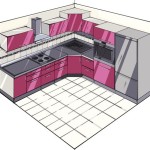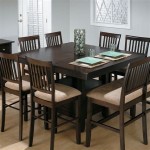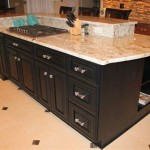Faucet Head Options for Kitchen Sinks: A Comprehensive Guide
The kitchen sink faucet head, also known as a kitchen faucet sprayer or nozzle, is a critical component of any functional kitchen. It controls the water flow, pressure, and direction, directly impacting efficiency and usability in various kitchen tasks, from washing dishes to rinsing produce. Understanding the different types of faucet heads available, their features, and their optimal applications is essential for homeowners, renovators, and anyone looking to upgrade their kitchen experience.
This article provides a detailed exploration of the various faucet head options for kitchen sinks, outlining their functionalities, benefits, and drawbacks. It delves into the technical aspects, including flow rates, materials, and compatibility considerations, to equip readers with the knowledge needed to make informed decisions when selecting the appropriate faucet head for their specific needs.
Types of Kitchen Faucet Heads
Kitchen faucet heads come in various designs, each offering specific advantages and catering to different preferences and kitchen layouts. The primary types include pull-down, pull-out, side spray, and fixed spout models. Each type has its own unique mechanism for dispensing water and providing maneuverability, which will influence the suitability of each in different working kitchens.
Pull-Down Faucet Heads: Pull-down faucet heads are characterized by their nozzle being integrated directly into the spout and designed to be pulled downwards into the sink for extended reach. These models typically feature a longer hose and a weighted retraction system that ensures the nozzle smoothly returns to its original position after use. Pull-down faucets are particularly well-suited for deep sinks and tasks requiring a high degree of maneuverability, such as rinsing large pots and pans or cleaning the entire sink basin. They usually offer multiple spray patterns, including a steady stream and a wider spray, accessible via a button or lever on the sprayer head itself. One potential drawback of pull-down models is that they can sometimes be bulkier than other types, potentially impacting the overall aesthetic of a smaller kitchen.
Pull-Out Faucet Heads: Pull-out faucet heads, similar to pull-down models, feature a retractable hose. However, instead of pulling downwards, the nozzle pulls out horizontally from the spout. This design tends to be more compact than pull-down models, making them a good option for kitchens with limited space or those seeking a more streamlined look. Pull-out faucets are generally easier to maneuver in tight spaces and provide excellent control over the water stream. They are often preferred for tasks that require filling containers outside the sink, such as watering plants or filling pet bowls. Like pull-down models, pull-out faucets also typically offer multiple spray patterns.
Side Spray Faucets: Side spray faucets feature a separate sprayer unit mounted adjacent to the main faucet spout. This allows for a dedicated sprayer that can be used independently of the primary water flow. Traditionally, side sprays were a common feature in many kitchens, providing a convenient option for rinsing and cleaning. While still available, side spray faucets are less prevalent than pull-down and pull-out models due to their separate installation requirements and the potential for clutter around the sink area. However, they remain a viable option for those who prefer a dedicated sprayer or who have an existing side spray installation they wish to maintain. They tend to have fewer spray pattern options compared to the other types.
Fixed Spout Faucets: Fixed spout faucets are the most basic type of kitchen faucet head. They feature a stationary spout that does not retract or offer a separate spray function. While lacking the versatility of pull-down, pull-out, and side spray models, fixed spout faucets are often more affordable and easier to install. They are suitable for kitchens where a simple and straightforward water dispensing solution is sufficient. These are typically found in basic apartments and older homes where elaborate features aren’t necessary. Some fixed spout faucets may include an aerator at the tip of the spout, which mixes air into the water stream to reduce splashing and improve water efficiency.
Key Features and Considerations
Beyond the basic types of faucet heads, several key features and considerations should influence the selection process. These include flow rate, material construction, spray pattern options, and compatibility with existing plumbing.
Flow Rate: Flow rate refers to the amount of water that flows through the faucet head per minute, typically measured in gallons per minute (GPM). Lower flow rates conserve water, while higher flow rates provide more powerful water streams. In the United States, federal regulations limit the maximum flow rate for kitchen faucets to 2.2 GPM. However, many manufacturers offer models with even lower flow rates to promote water conservation. When selecting a faucet head, it is important to consider the intended use and balance the need for water pressure with the desire for water efficiency. Some faucet heads also feature flow control mechanisms that allow users to adjust the water flow based on the specific task.
Material Construction: The materials used in the construction of a faucet head significantly impact its durability, longevity, and aesthetic appeal. Common materials include brass, stainless steel, zinc alloy, and plastic. Brass is a durable and corrosion-resistant material that is often used for the internal components of faucet heads. Stainless steel is another popular choice due to its durability, resistance to rust and corrosion, and sleek appearance. Zinc alloy is a more affordable option but may be less durable than brass or stainless steel. Plastic is often used for non-critical components, such as spray nozzles and handles. The finish of the faucet head is also an important consideration, as it affects the overall look and feel of the faucet. Common finishes include chrome, brushed nickel, oil-rubbed bronze, and matte black. The chosen finish should complement the existing kitchen décor and be resistant to scratches and stains.
Spray Pattern Options: Many kitchen faucet heads offer multiple spray pattern options, allowing users to customize the water flow based on the task at hand. Common spray patterns include a steady stream, a wide spray, and a powerful jet spray. A steady stream is ideal for filling pots and pans, while a wide spray is useful for rinsing dishes and produce. A powerful jet spray can be used to dislodge stubborn food particles from the sink or cookware. Some faucet heads also offer more specialized spray patterns, such as a pulsating massage spray or a mist spray. The availability of multiple spray pattern options enhances the versatility of the faucet head and allows for more efficient and effective kitchen tasks. The ease of switching between spray patterns is also an important consideration. Faucet heads with simple and intuitive switching mechanisms are generally preferred.
Compatibility and Installation: Before purchasing a new faucet head, it is crucial to ensure that it is compatible with the existing kitchen sink and plumbing system. Faucet heads come in various sizes and configurations, and it is important to select a model that fits the faucet body securely. Most faucet heads use a standard thread size, but it is always a good idea to verify the compatibility before making a purchase. The installation process should also be considered. Some faucet heads are designed for easy DIY installation, while others may require professional plumbing assistance. Ensure all necessary tools and materials are available before beginning the installation process. It is crucial to follow the manufacturer's instructions carefully to avoid damaging the faucet or plumbing system.
Advanced Features and Technologies
In addition to the basic features and considerations, many modern kitchen faucet heads incorporate advanced features and technologies designed to enhance usability, convenience, and water efficiency. These advancements can significantly improve the overall kitchen experience.
Touchless Technology: Touchless faucet technology allows users to control the water flow without physically touching the faucet handle. This is achieved through the use of sensors that detect motion and activate the water flow. Touchless faucets are particularly beneficial for maintaining hygiene in the kitchen, as they prevent the spread of germs and bacteria. They are also convenient for tasks that require both hands, such as kneading dough or handling raw meat. Touchless faucets typically require a power source, either through batteries or a hardwired electrical connection. While they offer numerous benefits, they can be more expensive than traditional faucet heads.
Filtration Systems: Some kitchen faucet heads incorporate integrated filtration systems that remove impurities from the water supply. These filters can effectively remove chlorine, lead, sediment, and other contaminants, providing cleaner and healthier drinking water. Filtered water is also beneficial for cooking and other kitchen tasks. Faucet heads with filtration systems typically require periodic filter replacements, which can add to the overall cost of ownership. However, the convenience of having filtered water on demand can outweigh the added expense for many users.
Temperature Control: Certain faucet heads offer advanced temperature control features that allow users to precisely adjust the water temperature. This can be particularly useful for tasks that require specific water temperatures, such as preparing baby formula or making tea. Some faucet heads feature digital displays that show the current water temperature, while others use color-coded indicators to provide a visual representation of the temperature range. These temperature control features enhance the user experience and provide greater control over the water supply.
Smart Faucet Technology: Smart faucet technology integrates the faucet head with smartphone apps and other smart home devices. This allows users to remotely control the faucet, monitor water usage, and receive alerts for potential leaks. Smart faucets can also be programmed to perform specific tasks, such as automatically filling a pot with a preset amount of water. While smart faucet technology is still relatively new, it offers the potential to significantly improve water efficiency and enhance the overall convenience of kitchen operations. These features come with a significantly higher price point.

Wowow Brushed Nickel Kitchen Sink Faucet Replacement Parts 3 Modes Head Pull Out Spray For G1 2 Connector

4 Pack Faucet Aerator Kitchen Sink Universal Head Bathroom Aerat

Kitchen Faucet Head Replacement Parts Angle Simple Sink Pull Down Nozz

Wowow Oil Rubbed Broe Kitchen Sink Faucet Replacement Parts 3 Modes Head Pull Out Spray For G1 2 Connector

Pull Down Faucet Replacement Head 2 Functions Kitchen Sprayer G 1 Out Spray For Brushed Nickel Sink

Pull Down Kitchen Faucet Head Replacement In Brushed Nickel With 9 Adapter Kit

3 Functions Kitchen Sink Faucet Sprayer Head 9 Adapter Pull Temu

Pull Down Kitchen Faucet Head Replacement In Brushed Nickel With 9 Adapter Kit

Waterfall Kitchen Faucet Head Replacement Bathroom Sink Water Saving Shower

Wowow Brushed Nickel Kitchen Sink Faucet Replacement Parts 3 Modes Head Pull Out Spray For G1 2 Connector H5003 Lw At Lowes Com








